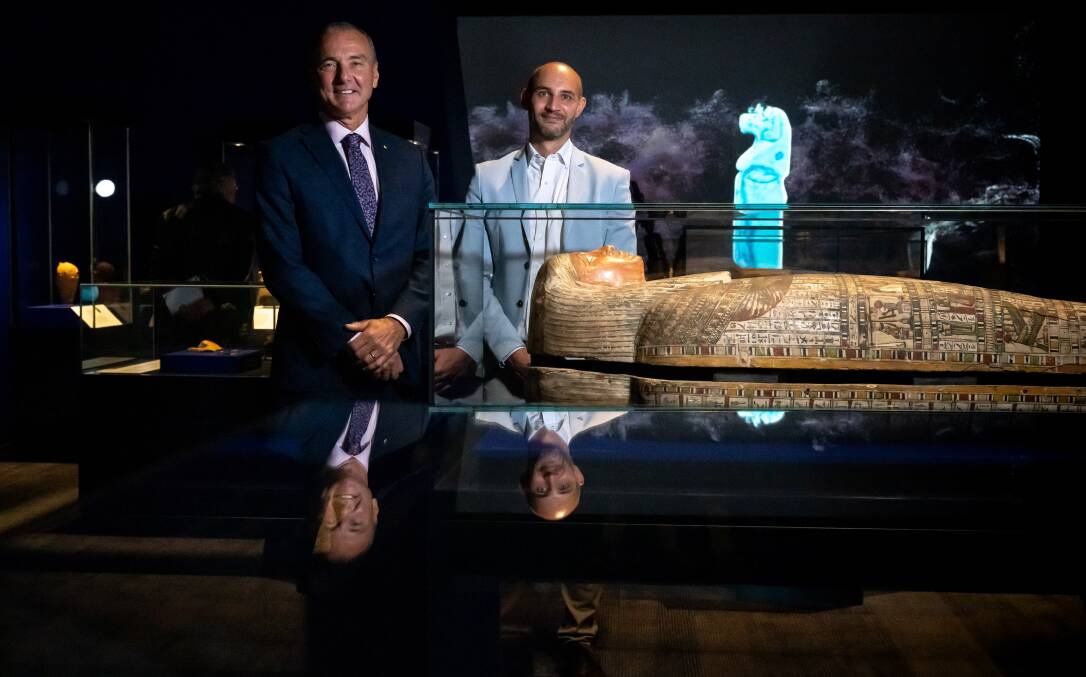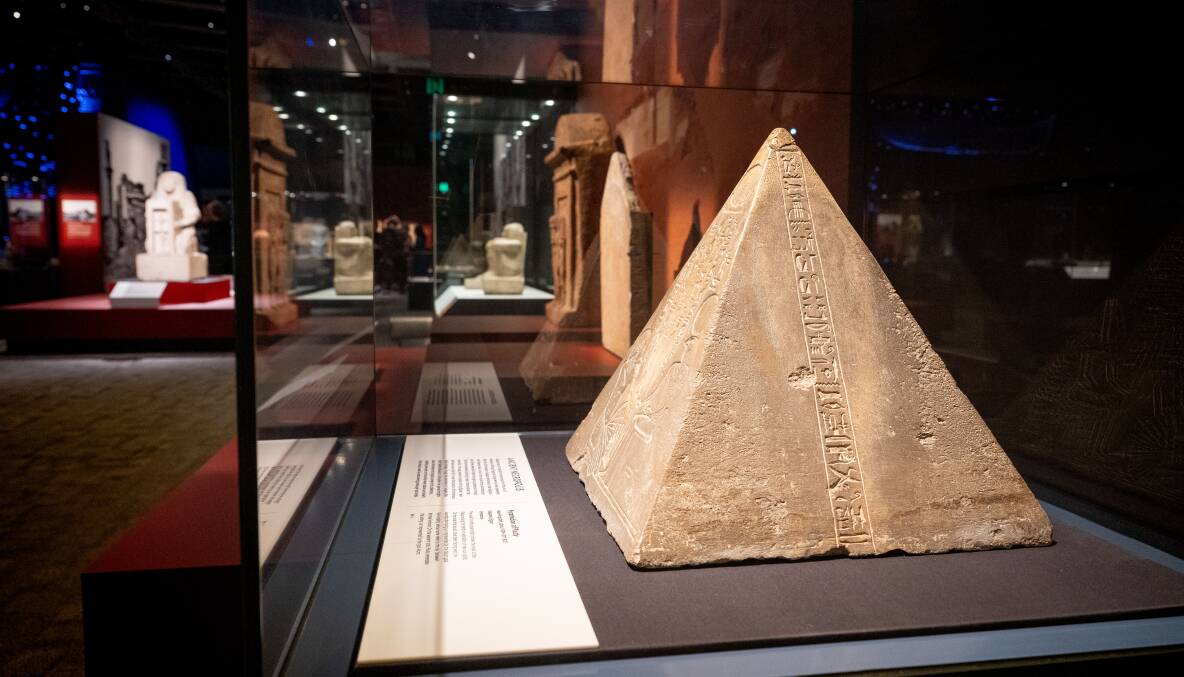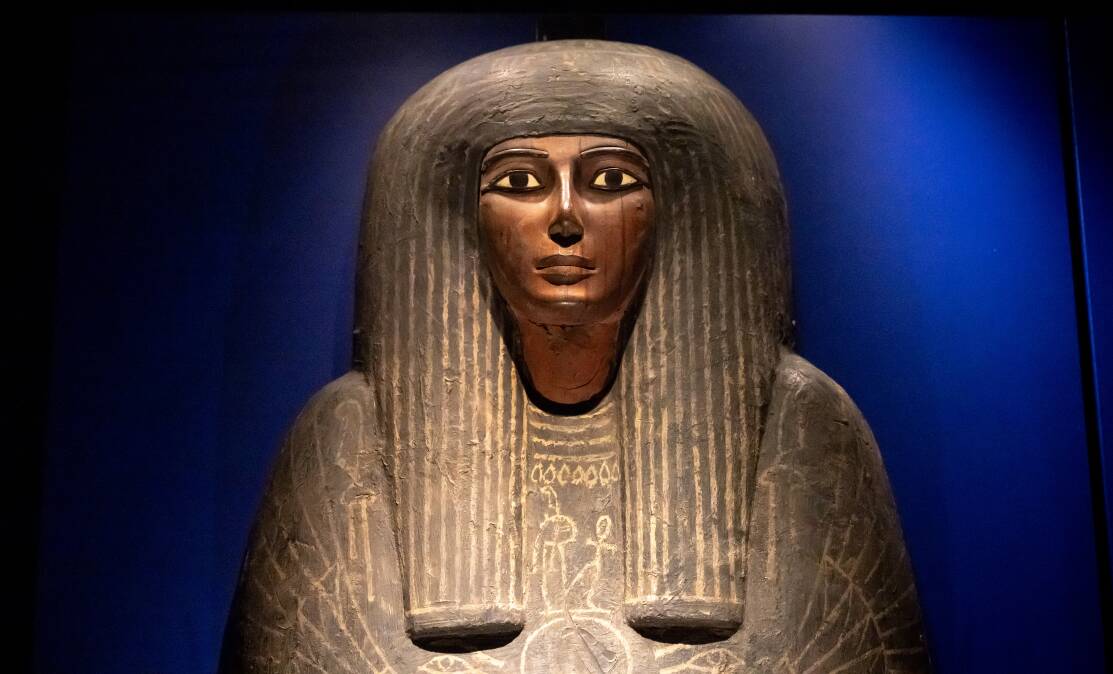It's a civilisation that has captivated people across the world for centuries. So as the National Museum of Australia opens its summer blockbuster, Discovering Ancient Egypt, it must know it's onto a winner.
Featuring items from one of the world's finest Egyptian collections, from the Dutch National Museum of Antiquities (Rijksmuseum van Oudheden), it exhibits more than 220 intriguing objects dating 3700 BCE to 15th century CE, including decorated coffins, ornate sculptures, rare Book of the Dead scrolls, jewellery and mummified people and animals.
It aims to illuminate ancient Egyptian rituals and their belief in the eternal afterlife, how their culture evolved and how archaeologists have studied and recorded the rich cultural heritage.
"You will see sculptures, papyrus sheets, wooden coffins, jewellery and elements that will transport you into the minds of the ancient Egyptians," Dutch National Museum of Antiquities curator of Egypt and Nubia collections Daniel Soliman said.
"With numerous interactives, including a station with smells from ancient Egypt, the exhibition is an experience for visitors of all ages. The exhibition is about so much more than pyramids and kings, it is about real people and their understanding of the world.
"What I believe distinguishes this exhibition is that it makes it clear that ancient Egypt doesn't exist in a vacuum."

Included in the exhibition is a sectioned-off area housing the mummified bodies of various unidentified Egyptians of various ages and backgrounds. They are preserved in all of their original linen bandages and are displayed next to recent scans. These results are being made public in Australia for the first time via interactive digital elements.
These scans reveal valuable information that illuminates the lived realities and health conditions of the ancient Egyptians.
Scans were also conducted on the mummified animals. Results showed in some instances mummified animals that presented as an ibis, for example, were actually parts of the remains of a dog.
Other highlights include the first sheet of a long papyrus scroll that the priest Padikhonsu took to his tomb to ensure his passage to the afterlife, a necklace with a centrepiece depicting the head of a ram, a symbol of Amum "the king of the gods", and the outer coffin of the priest Panesy.
"This rich material culture helps us to understand the lived experiences of the ancient Egyptians," National Museum of Australia curator Craig Middleton said.
"Everyday objects found in tombs because after death, a person believed they needed worldly goods from vessels and food and drink to jewellery, and different board games.

"But as in life, people who died and sought out this eternal afterlife were at the whim of the gods. It could be cruel and unpredictable.
"Therefore planning ahead was crucial, and Ancient Egyptians were excellent at this."
Friday's opening marks the last for National Museum of Australia director Mathew Trinca, who wraps up his time with the national institution in the coming days.
"I can't think of a more spectacular way to end my time here at the National Museum, than the opening of a show that is this spectacular," Dr Trinca said.

"And to be opening, a show that is as vital, as dramatic, as wonderful as this exhibition is. It's a knockout. And I'm so pleased and thrilled, and I have to say very fortunate that we're opening this show, as I finish my time at the museum."
Discovering Ancient Egypt is at the National Museum of Australia until September 8. Tickets are $25 from nma.gov.au.







